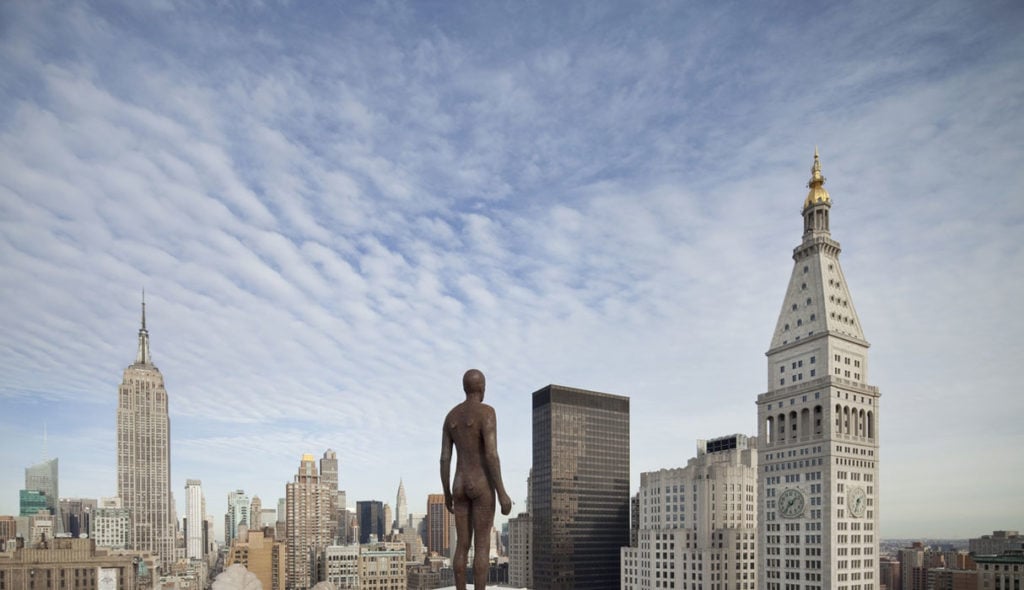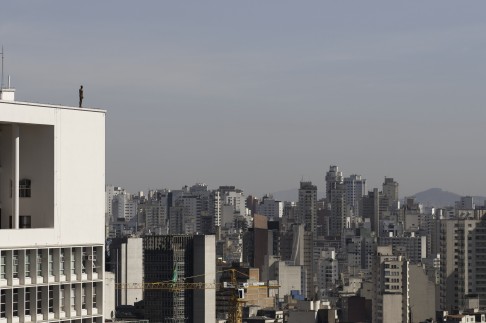Art & Exhibitions
Will Antony Gormley Find Enough Buildings to Host ‘Event Horizon’ in Hong Kong?
The rooftop art installation has repeatedly caused suicide scares.

The rooftop art installation has repeatedly caused suicide scares.

Sarah Cascone

The Hong Kong edition of Antony Gormley‘s installation Event Horizon, in which 31 life-size sculptures of the artist perch perilously close to the edge of urban rooftops, may be back on, but the British sculptor is struggling to find buildings to participate. The installation was originally meant to take place in 2014, but was cancelled after a man jumped to his death off a Hong Kong roof. It was then re-scheduled to open November 19.
Gormley’s unsettling work consists of a public installation of 31 fiberglass casts of his body. The piece, which has traveled to London and New York, among other cities, is installed on 27 rooftops; four statues are displayed at street level.

Antony Gormley, Event Horizon, São Paolo, Brazil.
Photo: Edouard Fraipont.
So far, organizers have unveiled only three of the Hong Kong locations for Event Horizon. Hongkong Land, a local property group which had planned to sponsor the show, will not participate, having pulled out after a J.P. Morgan employee killed himself by jumping off a 30-story Hongkong Land building in 2014.
While some locations have been confirmed, the South China Morning Post reports that Gormley admits that he is still in last-minute negotiations to secure the necessary number of venues.

Installation view of Antony Gormley’s Event Horizon.
Photo: Antony McCallum, via Wikimedia Commons.
According to SCMP, exhibition organizers have been in touch with the University of Hong Kong’s Centre for Suicide Research and Prevention, which has expressed concerns that the artwork could harm those suffering from depression.
For his part, Gormley is unconcerned. “Anyone with half the wit would tell the difference between an iron man evidently not moving and a living body,” he told SCMP. (Numerous calls to the police by those who mistook the sculptures for would-be jumpers during previous installations might suggest otherwise.)
While Gormley is open to the possibility that Event Horizon may encourage people to talk about the sensitive topic of suicide (potentially a good thing, he insists), “it is not the purpose of the project.”